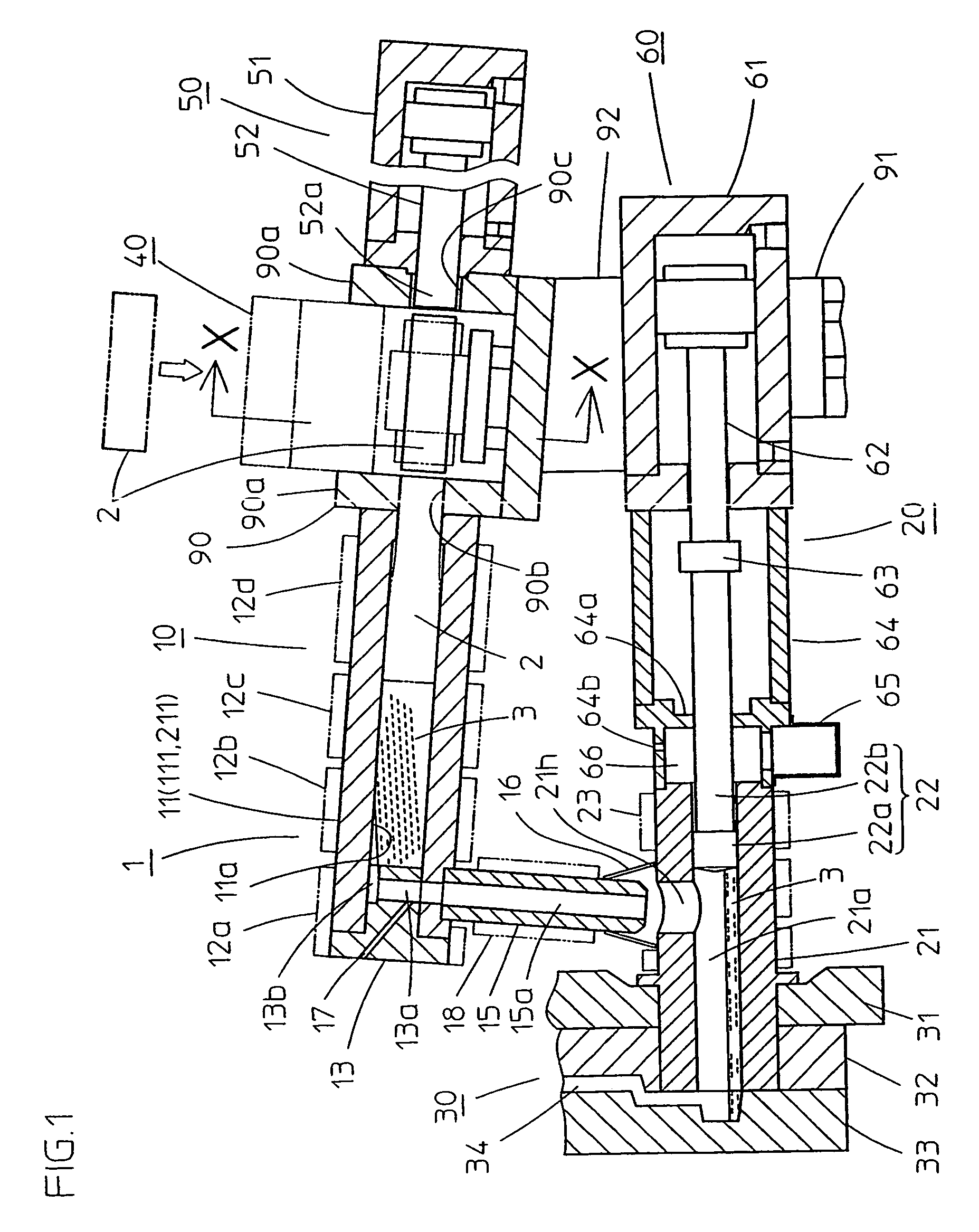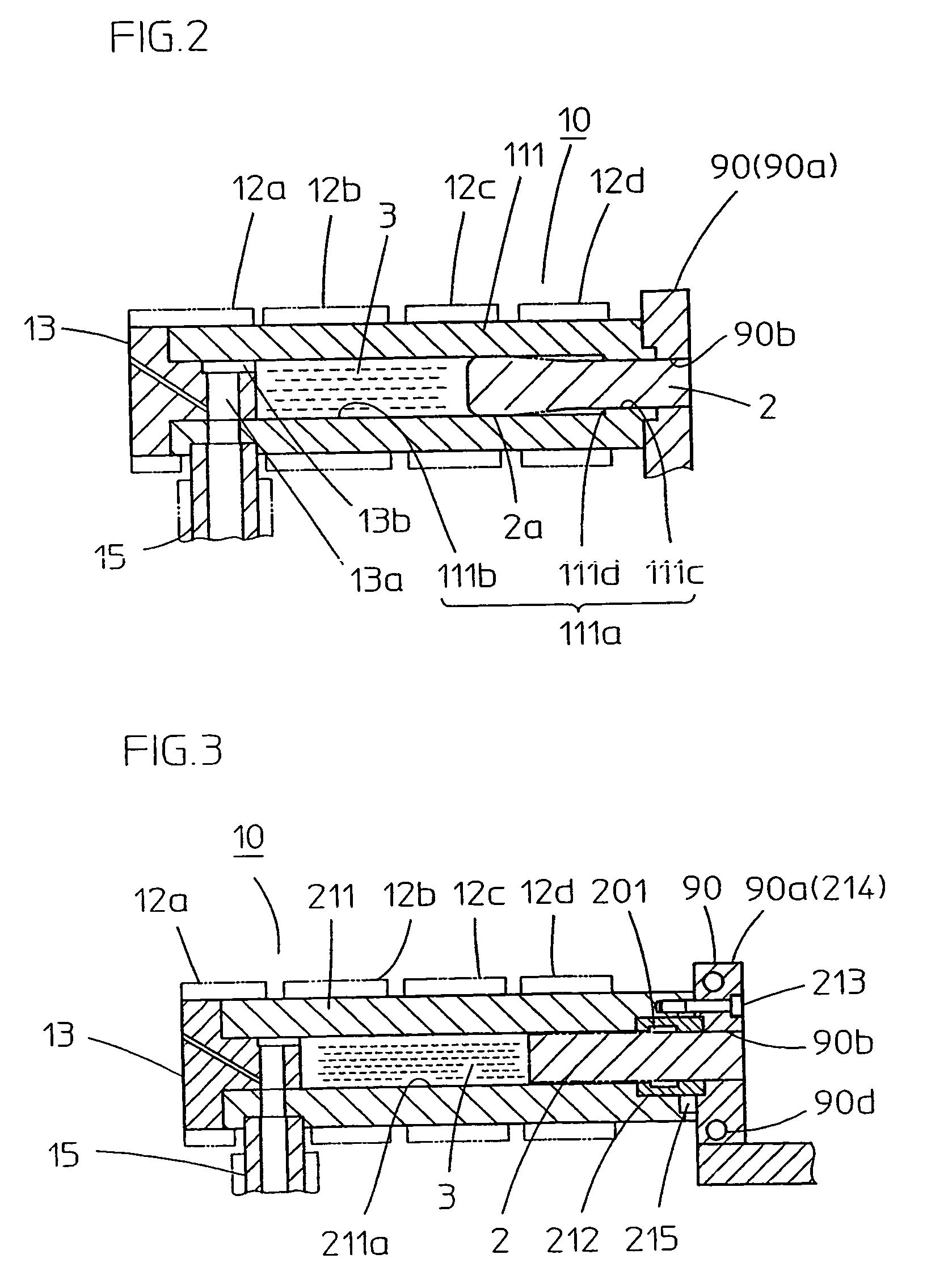Enhanced cold chamber die casting molding machine
a technology of injection apparatus and cold chamber die casting, which is applied in the direction of molten metal supply equipment, chemistry apparatus and processes, manufacturing tools, etc., can solve the problems of high operating cost of the above-described conventional molding method machine, inoperable furnace for a whole day, and long time to raise or lower the furnace temperature, so as to reduce the heating energy of the melting device and accelerate the maintenance work of the injection apparatus. , the effect of improving the heating efficiency
- Summary
- Abstract
- Description
- Claims
- Application Information
AI Technical Summary
Benefits of technology
Problems solved by technology
Method used
Image
Examples
first embodiment
[0078]In the first embodiment, at the time of measuring, the front end of the softened billet 2 is enlarged diametrically slightly due to the slight rising pressure of the molten metal 3. A side surface 2a of the enlarged front end seals molten metal 3 by being appropriately kept into contact with the wall surface of the larger diameter cylinder bore 111b appropriately. This sealing is performed when the enlarged side surface 2a appropriately keeps contact with the wall surface of the cylinder bore 111b, and this sealing is realized by the appropriate gap size between them.
[0079]It is convenient that the rising pressure of the molten metal 3 is small at the time of measuring, preventing much of the diametrical expansion of the side surface 2a. Eccentricity of the billet 2 with the cylinder bore 111b is suppressed and the gap between the base end side cylinder bore 111c and billet 2 becomes small and equally minimized.
[0080]The side surface 2a keeps appropriate contact with the cylin...
second embodiment
[0083]On the other hand, in the second embodiment, molten metal 3 is not sealed by the above-described enlarged diameter seal member, but rather is sealed by a circular solidified material seal which is the solidified matter of molten metal 3 in the annular groove 212a of the cooling sleeve 212. The seal of the circular solidified material seal is described below.
[0084]In the case of magnesium alloys, the billet 2 in the cooling sleeve 212a is controlled to be at about 400° C., which is near its softening temperature, by being powerfully cooled by cooling sleeve 212. In this condition, when the injection apparatus 1 first commences its preparatory injection molding operation, the billet 2 advances at a slow speed, as is described below. The molten metal 3, which has already melted at the front end of the melting cylinder 211, flows backward along the billet 2, filling up the annular groove 212a, and changing into solidified matter. This solidified matter, as the circular solidified ...
PUM
| Property | Measurement | Unit |
|---|---|---|
| diameter | aaaaa | aaaaa |
| length | aaaaa | aaaaa |
| temperatures | aaaaa | aaaaa |
Abstract
Description
Claims
Application Information
 Login to View More
Login to View More - R&D
- Intellectual Property
- Life Sciences
- Materials
- Tech Scout
- Unparalleled Data Quality
- Higher Quality Content
- 60% Fewer Hallucinations
Browse by: Latest US Patents, China's latest patents, Technical Efficacy Thesaurus, Application Domain, Technology Topic, Popular Technical Reports.
© 2025 PatSnap. All rights reserved.Legal|Privacy policy|Modern Slavery Act Transparency Statement|Sitemap|About US| Contact US: help@patsnap.com



